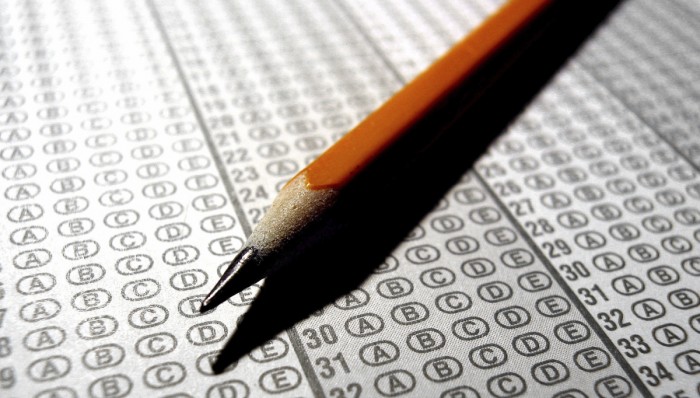Do you have questions about National Merit and the PSAT? Read on to learn more about what National Merit is and how students can qualify for scholarships. At the end of this post you will find a list of colleges that have a reputation for offering generous scholarships to students who have earned National Merit recognition. Please note, colleges adjust scholarship awards every year, so it is always important to verify any information with the college directly.
WHAT IS NATIONAL MERIT?
National Merit is the largest private scholarship corporation in the country. The first qualifier for earning National Merit recognition is earning the qualifying score on the junior-year PSAT/NMSQT. Qualifying scores vary from year to year and state to state. High scores can also be linked to other scholarship opportunities. Read our blog post The PSAT/NMSQT Selection Index Demystified to learn more about scoring.
NATIONAL MERIT SCHOLARSHIP MYTHS
MYTH: ALL NATIONAL MERIT SCHOLARS ARE GUARANTEED HUGE SCHOLARSHIPS FOR THE COLLEGE OF THEIR CHOICE.
TRUTH: Students must select their top-choice schools from the schools that offer NM scholarships. And even then, they are competing with other NM scholars for those awards.
MYTH: THE ONLY WAY TO GET MERIT AID FROM IVIES AND ELITE COLLEGES IS THROUGH THE NM SCHOLARSHIP.
TRUTH: Most elite universities offer very little merit aid. If they offer merit aid, it is generally privately endowed, offered by the university (not NM), and competitive. There are ZERO ivy-league schools that offer NM scholarships.
MYTH: NM SCHOLARS DON’T NEED TO HAVE AN EXCELLENT SAT/ACT SCORE IN ORDER TO BE AWARDED SCHOLARSHIPS.
TRUTH: Many universities offer merit-based aid for SAT/ACT scores. And when compiling a financial package for students, universities will consider both a student’s NM Scholar status and their SAT/ACT scores to see what the best fit for the university and the family is. Need-based aid can also factor into how much NM scholarship money a student may be offered. It’s important for students to apply for multiple scholarships as NM aid is never a guarantee.
HOW CAN YOU IMPROVE YOUR CHANCES OF EARNING NATIONAL MERIT?
- Plan to do Summer and Fall Prep of some kind.
- Take ALL the practice tests.
- Take an official SAT in August, September, or October
- Prep! (Choose from any combination of MTAT Courses, Boot Camps, Tutoring, Study Groups, or free online prep.)
NATIONAL MERIT SCHOLARSHIP TIMELINE
FALL SOPHOMORE YEAR: Indicator PSAT
- Scores of 200+ on Selection Index show potential for NM achievement. Score of 180+ shows potential for very high PSAT scores (1300/1400+).
SUMMER BEFORE JUNIOR YEAR: Prep begins
- Students should plan for a minimum of 20-30 hours for a 100-point improvement.
- Students should plan to take ALL of the College Board released practice PSAT and SAT tests.
- Students should plan to take the official August SAT. Order QAS report for $12; it will show every missed question for review.
FALL JUNIOR YEAR: PSAT NMSQT Test administered in October
- Students must continue ongoing prep.
- Students will test in either mid- or late-October.
- Scores are released in December (digital) and early January (paper).
- Take the SAT (or ACT). Students should test in the fall and only retest in the spring if needed to increase admissions qualifiers or scholarships.
FALL SENIOR YEAR: PSAT Finalists/Semi-finalists announced
- Students must complete the NM application, essay, and short answers and submit everything on time (the deadline changes each year). Official SAT/ACT scores must be submitted to NMSC by Dec 31st. “Comparable” score will be calculated using the selection-index score model, even for ACT (when converted to SAT using concordance).
- Submit high school paperwork: endorsement and transcript.
- Submit college coursework if applicable.
- College Choice: students will need to select their top-choice school for NM consideration but may declare “undecided” and then notify the NMSC as soon as possible.
- Sponsor College as First Choice: students should research schools with National Merit scholarships to ensure that they make a wise choice. These schools are often considered target or safety choices for a student.
- College-sponsored NM awards are NOT transferable if a student later decides to transfer schools, so they need to feel confident in their choice.
- All Finalists will be awarded the NM Finalist $2500 scholarship. Additional corporate-sponsored scholarships and stipends are awarded based on the NM finalist application.
WINTER SENIOR YEAR: NM Scholarships Awarded
- February: students will be chosen as finalists and will receive a Certificate of Merit from their high school. Students should submit NM sponsor college as first choice college by March 1st in order to be considered for the first round of applicants.
- March and May: scholarship winners notified.
SPONSOR COLLEGE AWARDS BASED ON REGION (subject to change!)
The following information is current as of January 2020. Colleges make changes to their National Merit Scholarships each year. Check the university webpage for the most up-to-date NM scholarship info!
TEXAS
ACU: National Achievement (full tuition), National Hispanic Recognition (up to $6000/yr), Semi-Finalists and Finalists guaranteed full tuition + $1500 stipend, Commended $2000
BAYLOR: Invitation to Excellence (competition for full tuition scholarships)
A&M: Finalist, must name A&M first choice ($42,000 + $1000 study abroad stipend + $3000 NMRA supplement for 5th year)
TEXAS TECH: Finalist, must name Tech as first choice for full tuition, fees, room/board, transportation and personal stipend
UTDALLAS: Automatic admission into Honors College, full tuition, $4000 semester cash stipend, $3000 NMSC scholarship, up to $6000 for study abroad, $1500 semester on-campus housing stipend
UNIVERSITY OF HOUSTON: Finalist, full tuition and required fees, one-time $1000 undergrad research stipend, one-time $2000 study abroad stipend; must select as first choice
OUT OF STATE
ALABAMA: Full tuition up to 5 years, four years of on-campus housing, $14,000 stipend, $2,000 allowance for research or study abroad, $1,000 technology enrichment allowance
BOSTON UNIVERSITY: Finalist first-choice, $80,000 (over 4 years)
BYU: Full tuition, limited availability
FLORIDA ATLANTIC UNIVERSITY: Cost of attendance, regardless of residency
FLORIDA STATE: Cost of attendance ($80,000+), guaranteed admission to University Honors Program
FORDHAM: Full tuition with A/A- average and top 2-3% of admitted students, competitive
ILLINOIS WESLEYAN UNIVERSITY: Up to three scholarships up to $160,000; $16,000 otherwise
IOWA STATE: Full tuition for residents, varies for non-residents
LOYOLA: Full tuition for one student, $8,000 if not selected
NORTHEASTERN: Competitive merit-based award
OKLAHOMA STATE: Finalists who select OSU as their first choice, up to five-year full tuition waiver
OLE MISS: Full tuition + room ($54,776 for residents, $118,592 for non-residents)
OU: Semi-finalists with 3.5 GPA earn $4000/yr; Finalists who name OU as first choice gain $68,500
UNIVERSITY OF ARIZONA: $72,000 (full tuition plus) + $1,500 for study abroad for residents, varies for non-residents + $1,500 for study abroad depending on GPA and test scores
UNIVERSITY OF ARKANSAS: Finalists, first choice, $40.000
UNIVERSITY OF CINCINNATI: Full in-state tuition, guaranteed admission to honors program and $1,500 one-time allocation towards purchase of computer, research or study abroad. 60 available, first-come, first-served
UNIVERSITY OF FLORIDA: Finalist, cost of attendance (full ride)
UNIVERSITY OF IDAHO: Basic cost of attendance ($66,976 for residents, $137,520 for non-residents)
UNIVERSITY OF KANSAS: $40,000 for residents
UNIVERSITY OF KENTUCKY: Full in-state or out-of-state tuition and housing stipend
UNIVERSITY OF LOUISVILLE: Full in-state tuition + $32,000 allowance for room, board and books or $80,000 for out-of-state students
UNIVERSITY OF MAINE: Full tuition and most fees
UNIVERSITY OF MIAMI: Cost of attendance (for Florida residents only)
UNIVERSITY OF MINNESOTA: Up to $40,000
UNIVERSITY OF NEBRASKA: Full tuition + $8,000
UNIVERSITY OF NEW MEXICO: $75,212 for residents, $137,792 for non-residents + iPad
UNIVERSITY OF NORTH DAKOTA: Full tuition/fee waiver for ND and MN residents
UNIVERSITY OF SOUTH CAROLINA: $40,000 for residents, up to $104,000 with tuition reduction for non-residents
UNIVERSITY OF SOUTH FLORIDA: Full cost of attendance, guaranteed admittance to honors college and on-campus housing
UNIVERSITY OF TULSA: Full tuition and basic room and board
USC: Finalist, half tuition (limited)
VIRGINIA COMMONWEALTH: Cost of tuition/fees + room and board
WASHINGTON STATE: Finalist, full tuition
WHEATON COLLEGE: Finalist, merit-based coupled with need-based aid, $68,000-$72,000

Education and money relation concept. Isolated on white. High quality 3D render.






